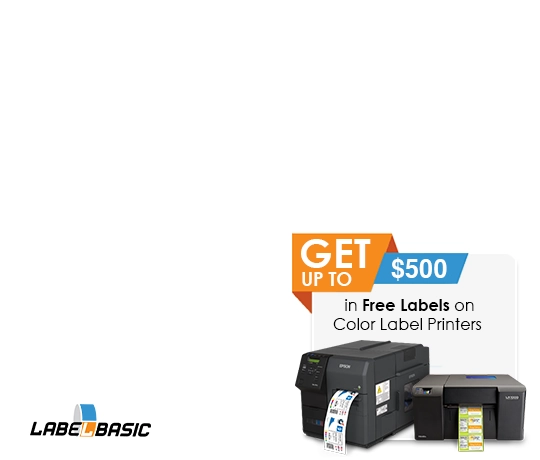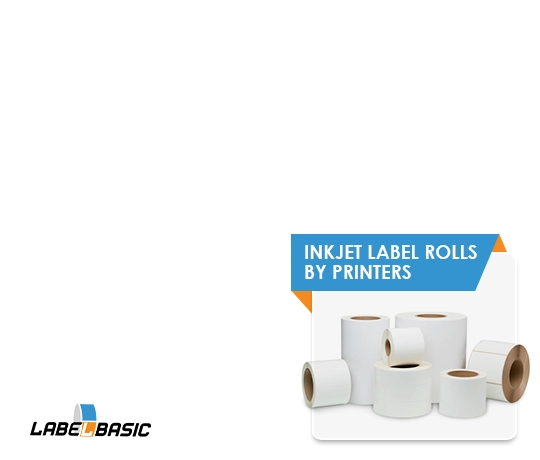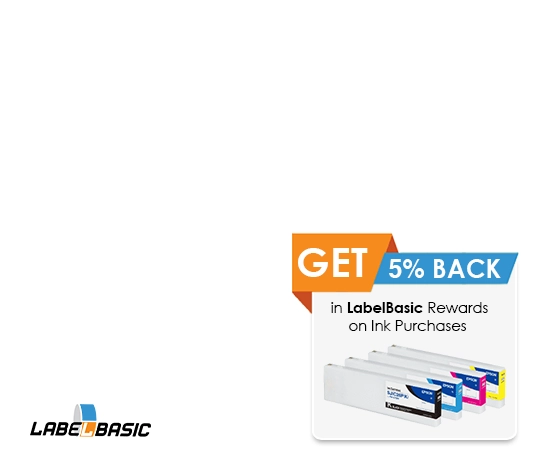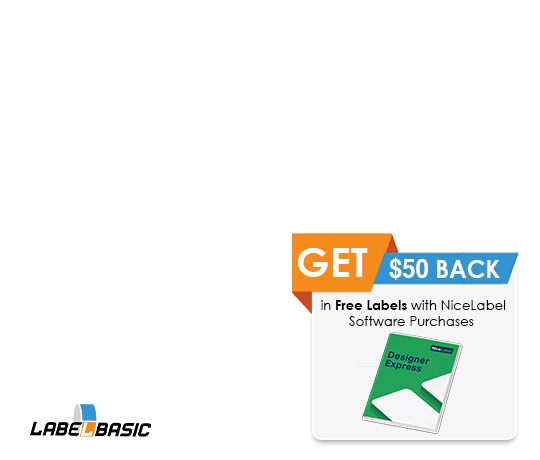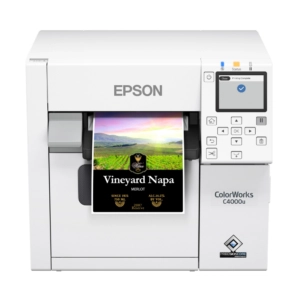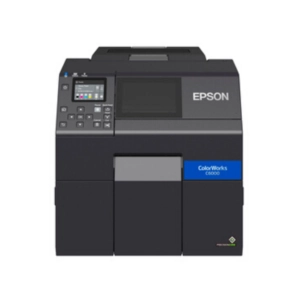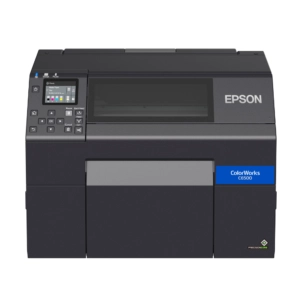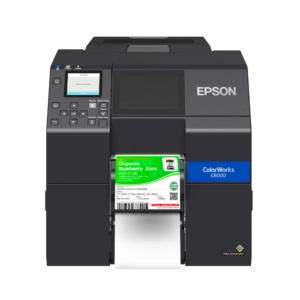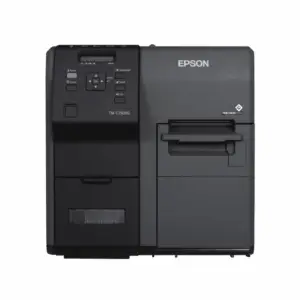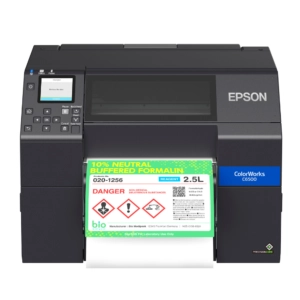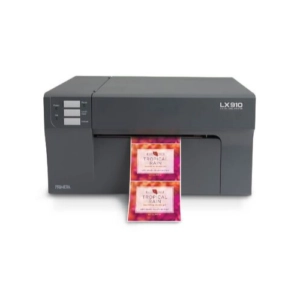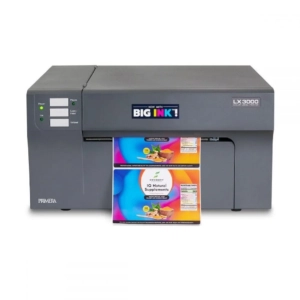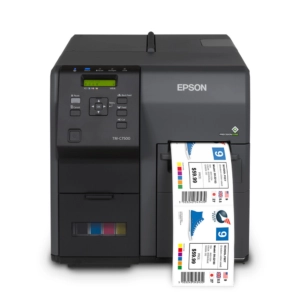Nutritional Label Printers
Nutritional labels are incredibly important. Consumers don’t just shy away; they shun products that lack any nutritional information. You also cannot cut corners here by providing half-baked information. Proper nutritional information labels that conform to standards are mandatory.
Consequently, products without legible and standardized nutritional labels are often not stocked. The market shelves are ruled by items that can provide value to the consumers. And a great part of that value is nutritional information.
Having custom printed labels is a massive benefit in today’s market. They can quickly adapt to reflect changing federal regulations as well as consumer demands. Needless to mention, labels also need to incorporate any changes in your product itself which can be due to a variety of reasons.
Benefits of a Nutritional Label Printer
Nutritional label printers allow you to print your own nutritional labels in a hurry. All you need is suitable paper and a custom label printer to start your own operation of printing and sticking nutritional labels on your products.
Given the importance of having proper nutritional labels and the ease of use of these printers, it’s easy to see why it is becoming quite the norm now. Smaller businesses, household businesses, independent sellers, local manufacturers, and many others are opting for printing their own nutritional labels for their products.
It’s not only going to save time in all the back and forth, communication, revisions, and delivery times but having a nutritional label printer also saves you money. Getting your label printed from elsewhere is a major recurring cost – one that you have to factor into your budget regularly.
In contrast, setting up your own custom nutritional label printer is a one-time investment that allows you to speed up the process and save up on recurring costs.
How to Print High-quality Nutritional Labels
The right way to design a nutritional label is to include a set of key metrics finalized by the FDA. Know your nutrition labels before you start printing them. A nutrition label must include the serving size, calories, calories from fat, nutrients (like cholesterol, sodium, vitamins, etc.), and the percentage of the daily value (based on a 2,000-calorie diet). Let’s break all this down to better understand what they mean.
- The serving size: The serving size is generally the first bit of information printed on the nutritional label. Serving sizes have been standardized by the FDA. This makes deriving nutritional information from products much easier. A key advantage of the serving size information is that it allows a consumer to compare two completely different types of food or to combine them. Typically, the serving size is indicated in familiar units – like pieces, tablespoons, or cups. In addition, you should include the number of grams (or the metric amount).
- Calories: Calories are key to determine the energy content of a particular product. People managing their weight benefit the most from knowing their daily calorie intake. You also need to list the total calories from the fat content of the product, if any.
- Nutrients: The third most important factor is nutrient content. Nutrients usually follow the calories row. First, you should list nutrients that can have a negative impact on the health of the consumer. This means cholesterol, sodium, and total fat go in the top. Following those are the common nutrients that an American diet should ideally include, such as carbohydrates (dietary fibers or sugars, for example), Vitamins A and C, calcium, protein, iron, potassium, magnesium, and so on. The point behind listing fats on top is that controlling the fat intake is extremely important with a large portion of the American population nearing obesity. Saturated fat, trans fat, cholesterol, and sodium all additionally increase the risk of a variety of diseases and complications.
- Percent daily values: The percent daily value tells consumers the ratio of the nutrients to the average recommended daily intake. This can allow them to consume the product in higher or lower quantities depending on whether it’s very sparse or very rich in its nutrients content.
So, now that you have a lowdown on the nutritional label, what’s the next step? Well, the next step is to figure out which will be the best nutritional label printer for your needs. We have nutritional label printers from Epson and Primera that fit the bill.
Nutritional Label Printers
Showing all 11 results
-
Epson Label Printers, Color Label Printers
Epson ColorWorks CW-C4000 Color Inkjet Label Printer
A powerful and compact on-demand commercial color label printer
- Matte or Gloss – Select Matte Black or Gloss Black Ink to suit your style; printer locks to chosen ink for uniform results.
- High-Resolution Printing – Up to 1200 dpi with variable sizes for vivid, sharp labels.
- Wide Compatibility – Supports ZPL II, major middleware, SAP, Windows®, Mac®, and Linux.
- Optimal Media Integration – Uses Epson C4000 Label Rolls for smooth, top-quality prints.
- Enhanced Durability – Produces labels resistant to smudging, water, and fading, fit for various uses.
SKU: n/a -
Epson Label Printers, Color Label Printers
Epson ColorWorks CW-C6000A Color Inkjet Label Printer with Auto Cutter
Epson Label Printers, Color Label PrintersEpson ColorWorks CW-C6000A Color Inkjet Label Printer with Auto Cutter
Quality 4″ color label print and cut at a price comparable to thermal transfer.
- Quality Color Printing – Enjoy high-quality 4″ color label printing with a resolution of up to 1200 dpi, delivering crisp images comparable to pre-printed labels.
- Reliability – Engineered for demanding applications, the CW-C6000A is backed by industry-leading service and support from Epson, ensuring consistent performance.
- Efficient Productivity – Say goodbye to pre-printing as this printer eliminates the need, allowing you to print labels on-demand at speeds of up to 5″ per second, with a fast time to the first label.
- Seamless Integration – Compatible with ZPL II, major middleware, SAP, Windows®, Mac®, and Linux, this printer seamlessly integrates into your existing workflow.
- Auto Cutter – The built-in auto-cutter speeds up the application process, enabling easy job separation and enhancing efficiency.
- Versatility – Choose between matte or gloss versions to suit your specific printing needs. The matte option offers bold and sharp prints, while the gloss version is versatile for various materials.
SKU: C31CH76A9991 -
Epson Label Printers, Color Label Printers
Epson ColorWorks CW-C6500A Color Inkjet Label Printer with Auto Cutter
Epson Label Printers, Color Label PrintersEpson ColorWorks CW-C6500A Color Inkjet Label Printer with Auto Cutter
Quality 8″ color label print and cut at a price comparable to thermal transfer.
- High-Quality Printing: Experience stunning 8″ color label prints with up to 1200 dpi resolution, rivaling pre-printed labels.
- Reliability Redefined: Engineered for demanding applications, the CW-C6500A delivers consistent performance, backed by Epson’s industry-leading service and support.
- Enhanced Productivity: With print speeds up to 5″ per second and fast time to first label, eliminate the need for pre-printing and streamline your labeling process.
- Seamless Integration: Compatible with ZPL II, major middleware, SAP, Windows®, Mac®, and Linux, this printer seamlessly integrates into your workflow, offering flexibility and convenience.
- Efficient Auto Cutter: The built-in auto-cutter simplifies the application process, enabling easy job separation and enhancing overall efficiency.
- Versatility Personified: Choose between matte or gloss versions to suit your specific printing needs, ensuring every label meets your desired finish.
SKU: C31CH77101 -
Epson Label Printers, Color Label Printers
Epson ColorWorks CW-C6000P Color Inkjet Label Printer with Peel-and-Present
Epson Label Printers, Color Label PrintersEpson ColorWorks CW-C6000P Color Inkjet Label Printer with Peel-and-Present
Quality 4″ color label print and peel at a price comparable to thermal transfer.
- Efficient Peel-and-Present Technology – Simplify label application with the built-in peeler, enhancing productivity and reducing manual labor.
- Superior Print Quality – Achieve crisp, vibrant labels with up to 1200 dpi resolution and various droplet sizes, ensuring stunning image quality comparable to pre-printed labels.
- Fast Print Speeds – With speeds up to 5 inches per second, accelerate your labeling process and eliminate the need for pre-printing.
- Seamless Integration – Compatible with ZPL II, major middleware, SAP, Windows®, Mac®, and Linux, this printer seamlessly integrates into your existing workflow.
- Versatile Ink Cartridges – Utilize Epson CW-C6000P ink cartridges, featuring cyan, magenta, yellow, and black, filled with Epson UltraChrome® DL pigment ink.
- Hardware Features – Compatible with all popular operating systems, remote management capabilities, and an I/O control port for seamless connectivity.
SKU: C31CH76201 -
Epson Label Printers, Color Label Printers
Epson ColorWorks TM-C7500G Gloss Inkjet Label Printer
Reliable color inkjet label printer ideal for high-volume environments, offering on-demand, full-color glossy printing at low costs.
- High-Speed Printing – Experience unmatched printing speeds up to 11.8 inches per second, enabling you to meet your business’s demands without sacrificing quality.
- High-Quality Results – With the PrecisionCore inkjet technology, the TM-C7500G delivers sharp text and precise barcodes, ideal for glossy labels that stand out.
- Cost-Effective – Utilizing high-yield ink cartridges, this printer reduces the need for frequent replacements, offering a low cost per label and minimal waste.
- Easy Integration – Thanks to the built-in ESC/Label language, integrating the TM-C7500G into your existing workflow is seamless, enhancing efficiency without extensive programming changes.
SKU: C31CD84311 -
Epson Label Printers, Color Label Printers
Epson ColorWorks CW-C6500P Color Inkjet Label Printer with Peel-and-Present
Epson Label Printers, Color Label PrintersEpson ColorWorks CW-C6500P Color Inkjet Label Printer with Peel-and-Present
Quality 8″ color label print and peel at a price comparable to thermal transfer.
- Print and Peel Technology – Featuring an innovative Peel-and-Present mechanism, this printer simplifies the labeling process, allowing for quick and effortless application of high-quality labels directly after printing.
- Speed and Efficiency – With a printing capability of 5 inches per second, the Epson ColorWorks CW-C6500P maximizes productivity, enabling your business to speed up its packaging process without sacrificing quality.
- Exceptional Print Quality – Enjoy vivid, crisp images and text with up to 1200 dpi resolution, ensuring your labels capture the eye with their clarity and color accuracy.
- Versatile Connectivity – Easily integrate the CW-C6500P into your existing systems with support for ZPL II, major middleware, SAP, and compatibility with Windows®, Mac®, and Linux platforms.
- Robust Construction – Designed by Epson with reliability in mind, this printer is engineered for the most demanding applications and is supported by industry-leading service.
SKU: C31CH77201 -
Primera Label Printers, Color Label Printers
Primera LX910 Label Printer
Primera’s most advanced color label printer utilizes both dye and pigment-based inks for superior versatility and quality.
- Versatile Printing – Supports 0.5″ to 8.25″ wide labels at up to 4.5 inches/sec.
- Streamlined Functionality – Single cartridge system with interchangeable inks for easy maintenance.
- Accurate Cutting – Built-in “pizza-wheel” style cutter for clean, consistent edges.
- Cost-effective – Cartridges include integrated print head, avoiding costly replacements.
SKU: 74416 -
Color Label Printers, Primera Label Printers
Primera LX3000 Label Printer
The LX3000, Primera’s latest top-tier color label printer with a new tanked-ink system and print head.
- High-Quality Printing – The LX3000 produces photo-quality, full-color, waterproof, and scratch-resistant labels.
- Versatile Inks – Select from dye or pigment inks for optimal gloss, durability, and color intensity.
- Cost-Efficient – Benefit from one of the lowest costs per label with large ink tanks and a reusable print head.
- Easy Setup – Effortless installation with a complete package for immediate label printing.
SKU: n/a -
Epson Label Printers, Color Label Printers
Epson ColorWorks TM-C7500 Matte Inkjet Label Printer
This color label printer is engineered for efficiency, precision, and reliability, making it an essential tool for businesses requiring high-quality, full-color labels on demand.
- High-Speed Printing – Accelerate your label production with speeds up to 11.8 inches per second, allowing rapid creation of full-color labels with variable data.
- Cost Efficiency – Utilize high-yield ink cartridges for fewer changes and reduced waste, surpassing the efficiency of most thermal transfer printers and lowering operational costs.
- Seamless Integration – Incorporate the printer seamlessly into your existing workflow with the built-in ESC/Label language, simplifying the transition and enabling easy color additions through straightforward programming.
- Exceptional Print Quality – Benefit from PrecisionCore inkjet technology for sharp text and precise barcodes, ensuring professional-quality labels every time. The TM-C7500 excels with matte label rolls, enhancing the appearance of your products.
SKU: C31CD84011
